Related Research Articles
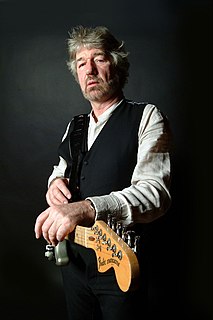
William Russell is an English dramatist, lyricist and composer. His best known works are Educating Rita, Shirley Valentine, Blood Brothers and Our Day Out.
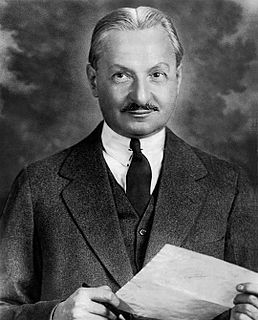
Florenz Edward Ziegfeld Jr. was an American Broadway impresario, notable for his series of theatrical revues, the Ziegfeld Follies (1907–1931), inspired by the Folies Bergère of Paris. He also produced the musical Show Boat. He was known as the "glorifier of the American girl". Ziegfeld is a member of the American Theater Hall of Fame.

The Group Theatre was a theater collective based in New York City and formed in 1931 by Harold Clurman, Cheryl Crawford and Lee Strasberg. It was intended as a base for the kind of theatre they and their colleagues believed in— a forceful, naturalistic and highly disciplined artistry. They were pioneers of what would become an "American acting technique", derived from the teachings of Konstantin Stanislavski, but pushed beyond them as well. The company included actors, directors, playwrights, and producers. The name "Group" came from the idea of the actors as a pure ensemble; a reference to the company as "our group" led them to "accept the inevitable and call their company The Group Theatre."

Wonderful Town is a 1953 musical with book written by Joseph A. Fields and Jerome Chodorov, lyrics by Betty Comden and Adolph Green, and music by Leonard Bernstein. The musical tells the story of two sisters who aspire to be a writer and actress respectively, seeking success from their basement apartment in New York City's Greenwich Village. It is based on Fields and Chodorov's 1940 play My Sister Eileen, which in turn originated from autobiographical short stories by Ruth McKenney first published in The New Yorker in the late 1930s and later published in book form as My Sister Eileen. Only the last two stories in McKenney's book were used, and they were heavily modified.
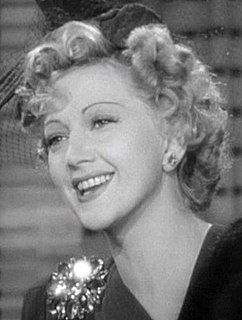
Stella Adler was an American actress and acting teacher. She founded the Stella Adler Studio of Acting in New York City in 1949. Later in life she taught part time in Los Angeles, with the assistance of her protégée, actress Joanne Linville, who continued to teach Adler's technique. Her grandson Tom Oppenheim now runs the school in New York City, which has produced alumni such as Marlon Brando, Robert De Niro, Harvey Keitel, Elaine Stritch, Kate Mulgrew, Kipp Hamilton, Jenny Lumet, and Jeff Celentano.

Luther Adler was an American actor best known for his work in theatre, but who also worked in film and television. He also directed plays on Broadway.

Jay Adler was an American actor in theater, television, and film.

Ah, Wilderness! is a comedy by American playwright Eugene O'Neill that premiered on Broadway at the Guild Theatre on October 2, 1933. It differs from a typical O'Neill play in its happy ending for the central character, and depiction of a happy family in turn of the century America. It is O'Neill's only well-known comedy.
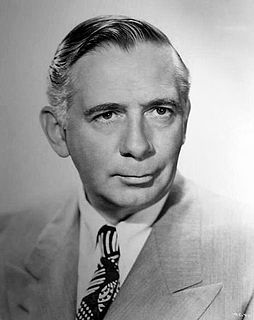
Ray Bidwell Collins was an American character actor in stock and Broadway theatre, radio, films, and television. With 900 stage roles to his credit, he became one of the most successful actors in the developing field of radio drama. A friend and associate of Orson Welles for many years, Collins went to Hollywood with the Mercury Theatre company and made his feature-film debut in Citizen Kane (1941), as Kane's ruthless political rival. Collins appeared in more than 75 films and had one of his best-remembered roles on television, as Los Angeles homicide detective Lieutenant Arthur Tragg in the CBS-TV series Perry Mason.

Men in White is a 1933 play written by American playwright Sidney Kingsley. It was produced by the Group Theatre, Sidney Harmon and James Ramsey Ullman, directed by Lee Strasberg with scenic design created by Mordecai Gorelik. It ran for 351 performances from September 26, 1933 to July 28, 1934 at the Broadhurst Theatre. The play won the 1934 Pulitzer Prize for Drama.
Bruce Adler was an American Broadway actor. After debuting on the Broadway stage in the 1979 revival of Oklahoma!, he went on to a career that saw him nominated for Tony Awards as Best Featured Actor in a Musical for Those Were the Days (1991) and Crazy For You (1992). His film work was limited to voice work in animated films, notably providing the singing voice for the narrator of the 1992 Disney film Aladdin and the 1996 sequel Aladdin and the King of Thieves.

Rocket to the Moon is a 1938 play by the American playwright Clifford Odets. Originally produced by the Group Theatre at Broadway's Belasco Theatre, directed by Harold Clurman, starring Morris Carnovsky, Luther Adler and Eleanor Lynn.

Ruth Findlay was an American stage actress active over the early decades of the 20th century.
Till the Day I Die is a 1935 Broadway seven-scene drama written by Clifford Odets, produced by the Group Theatre and staged by Cheryl Crawford. It ran for 136 performances from March 26, 1935 to July 1935 at the Longacre Theatre.

Ruth Gloria Nelson was an American stage and film actress. She is known for her roles in films such as Wilson, A Tree Grows in Brooklyn, Humoresque, 3 Women, The Late Show and Awakenings. She was the wife of John Cromwell, whom she acted alongside on multiple occasions.
Night Over Taos was a 1932 Broadway three-act drama written by Maxwell Anderson, produced by the Group Theatre and staged by Lee Strasberg. It was the Group Theatre's third production. It ran for 13 performances from March 9, 1936 closing that month at the 48th Street Theatre.

Russell Collins was an American actor whose 43-year career included hundreds of performances on stage, in feature films, and on television.
William John Challee was an American actor.
The House of Connelly is a 1931 Broadway two-act drama written by Paul Green, produced by the Group Theatre in association with The Theatre Guild and staged by Lee Strasberg and Cheryl Crawford. It ran for 91 performances from September 28, 1931 to November 14, 1931 at the Martin Beck Theatre and then from November 16, 1931 to January 2, 1932 at the Mansfield Theatre. It was the inaugural production of the Group Theatre.
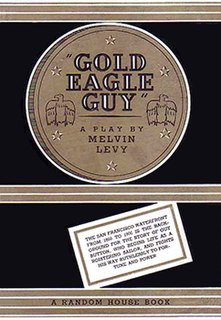
Gold Eagle Guy is a 1934 Broadway five scene drama written by Melvin Levy, produced by the Group Theatre with D. A. Doran, Jr., staged by Lee Strasberg, choreography by Helen Tamiris with scenic design by Donald Oenslager and costume design by Kay Morrison. It ran for 65 performances from November 28, 1934, to January 1935 at the Morosco Theatre.